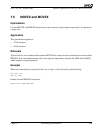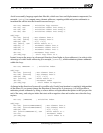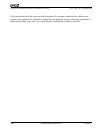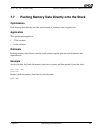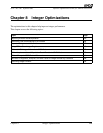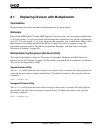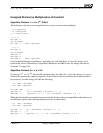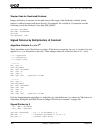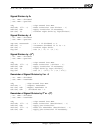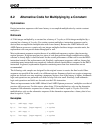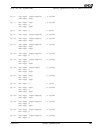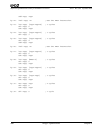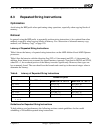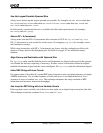
Chapter 8 Integer Optimizations 161
Software Optimization Guide for AMD64 Processors
25112 Rev. 3.06 September 2005
Unsigned Division by Multiplication of Constant
Algorithm: Divisors 1 <= d < 2
31
, Odd d
The following code shows an unsigned division using a constant value multiplier.
; a = algorithm
; m = multiplier
; s = shift factor
; a == 0
mov eax, m
mul dividend
shr edx, s ; EDX = quotient
; a == 1
mov eax, m
mul dividend
add eax, m
adc edx, 0
shr edx, s ; EDX = quotient
Code for determining the algorithm (a), multiplier (m), and shift factor (s) from the divisor (d) is
found in the section “Derivation of Algorithm, Multiplier, and Shift Factor for Integer Division by
Constants” on page 186.
Algorithm: Divisors 2
31
<= d < 2
32
For divisors 2
31
<= d < 2
32
, the possible quotient values are either 0 or 1. For this reason, it is easy to
establish the quotient by simple comparison of the dividend and divisor.When the dividend needs to
be preserved, consider using code like the following:
; In: EAX = dividend
; Out: EDX = quotient
xor edx, edx ; 0
cmp eax, d ; CF = (dividend < divisor) ? 1 : 0
sbb edx, -1 ; quotient = 0 + 1 - CF = (dividend < divisor) ? 0 : 1
When the dividend does not need to be preserved, the division can be accomplished without the use of
an additional register, thus reducing register pressure, as shown here:
; In: EAX = dividend
; Out: EDX = quotient
cmp edx, d ; CF = (dividend < divisor) ? 1 : 0
mov eax, 0 ; 0
sbb eax, -1 ; quotient = 0 + 1 - CF = (dividend < divisor) ? 0 : 1



